Reviews
Nicholas Ray
USA, 1973-1976
Credits
Review by Cullen Gallagher
Posted on 08 September 2008
Source Bootleg DVD
Categories The Mystic: The Films of Nicholas Ray
Nicholas Ray: I’m sorry. This is so goddamn unreal, darling.
Leslie Levinson: It’s true. It just happened.
The line between what is and is not real in We Can’t Go Home Again is more than just a blur: it’s downright schizophrenic. And not just to the extent that its narrative mirrors the circumstances in which it was made1 - Nicholas Ray, weary after decades of Hollywood filmmaking, assumes a teaching position at the State University of New York at Binghamton and instructs his students through a collaborative feature-film endeavor - but to the possibility that what we are witnessing is the manifestation of Ray’s own mental breakdown. The symptoms of the disorder - paranoid delusions, warped perceptions, withdrawal from everyday life, behavioral irregularities, and a global splintering of one’s consciousness - are the threads of Ray’s delirious tapestry. And regardless of the many characters that pass by the screen, the one who remains at the center is always Ray. Like so many orbiting moons, the characters (all of them Ray’s students) circle around their teacher, either in submission, collaboration, or defiance, and often alternating between the three as their relationship develops and Ray’s own mental, physical, and spiritual states continue to deteriorate.
“I want to talk to you. Something happened to me in the night. Something that said I’ll never make another film. And that’s a premonition.”2 Ray’s words lay bare the rising frustration with commercial filmmaking that would culminate on the set of 55 Days at Peking with his physical and emotional collapse. Afterwards, Ray spent nearly a decade in Europe, and with no film projects ever coming to fruition, it seemed like his premonition might be coming true. In 1971, Ray received an invitation to lecture at Harpur College (part of SUNY Binghamton), whose new film department had been founded by Larry Gottheim and Ken Jacobs, which led to a two-year teaching position at the school.3 As captured in David Helpern and James Gutman’s documentary I’m a Stranger Here Myself, Ray and his students moved into an off-campus house together, creating a film-commune in which they all lived and worked together, alternating positions behind- and before-the-camera - seemingly the pinnacle of a collaborative relationship. And while his students’ own lives inspired many of the scenes4, they seem to be less individual personalities than extensions of Ray’s own psychology. As Ray’s wife, Susan, intimated:
[The students] were turned on by the fact that it was a collaborative effort. My point of view it wasn’t at all; it was all slave labour. I don’t mean that the slaves didn’t benefit - and I think it was the high point of their lives - but [Ray] was conscious and they were not. He knew what he was after, more or less; they just wanted it to work for them.5
As the singular auteur at the helm, Ray invests a lifetime worth of hopes, fears, dreams, nightmares, and neuroses into We Can’t Go Home Again. His supreme desire to prove his premonition wrong permeates every frame with equal parts anxiety and excitement. To those familiar with his work, its hard not to view this, his last (near) completed feature film, as the apotheosis of his career, which is not to suggest that the movie is necessarily his masterpiece, but that it just might be the most direct, unfiltered expression of “Nicholas Ray” on film. Without the interference and box-office expectations of the Hollywood studios, Ray no longer had to hide his presence in the film and, for better or for worse, Ray’s identity saturates We Can’t Go Home Again. In the same manner of Federico Fellini and 8½, the director and his film are consolidated, inexorable, and total.
In Rebel Without a Cause, James Dean’s Jim Stark cries out, “You’re tearing me apart!” And with We Can’t Go Home Again, Ray has torn apart the cinematic image. Simultaneously projecting myriad formats - super 8mm, 16mm, and a video synthesizer provided by Nam June Paik - and filming the multiple projections onto a single 35mm image6, Ray was able to actualize a sense of both mental fragmentation and a sensory/emotional deluge. The images overlap with ethereal majesty, at times highly literal (such as the political footage, including riots and protests) and others deeply ambiguous (whether the psychedelic designs or the dense layering of too-many projections). It is image overload, and only sensation and emotion exist: narrative is dead, logic unknown, time disrupted, and identity discontinuous. Henry Miller’s declaration of principle in Tropic of Cancer seems obliquely applicable to Ray’s anarchy: “[T]his is a prolonged insult, a gob of spit in the face of Art, a kick in the pats to God, Man, Destiny, Time, Love, Beauty… what you will. I am going to sing for you, a little off key perhaps, but I will sing.7” (Even future collaborator Wim Wenders admitted to being shocked by the film’s “total negation of any sense of image8,” while Jeff Greenberg called Ray’s new aesthetic “disturbing… but maybe it’s all part of the process of de-imagizing the Hollywood director.”9) The subversion that was always present in Ray’s most successful Hollywood productions - in terms of genre, character, plot, and mise-en-scene - explodes in We Can’t Go Home Again. As indicated in the title, Ray can no longer return to the modes of representation with which he began his career, and if the film feels more exploratory than expert, it is because Ray is charging ahead blindly (or half-blindly, if one remembers the single eye-patch worn over his right eye at this point in his life), improvising not just a story, but an entire form and methodology. And it is this adventurer’s spirit - along with Ray’s steadfast dedication to “never betray myself again10” - that makes the film feel so fresh and vigorous (and vertiginous and obscure) some thirty-odd years later.
Embedded within its politically specific time-period (the film opens with footage of the 1968 Democratic Convention, and conversational references to JFK, the Bay of Pigs, and Vietnam, abound), experimental aesthetics, and unavoidable technical flaws (poorly recorded audio that cuts in and out, and is often not synched up properly), is a story of adolescent uncertainty. As with the youths of They Live By Night and Rebel Without a Cause, the students’ idylls are crushed by social circumstance. “I didn’t know who to believe—my parents or the television set,” laments one student (Tom Farrell) in the opening narration. Later on he will confess, “I don’t even know why I came back to school, these dumb machines are just making noise at me. Is this what I have to do to graduate and get a job somewhere?” Following this is Ray’s entrance into the narrative. Opening a door, he is confronted by students who seem to vaguely recall his earlier movies. Ray’s inclusion of one student’s vocal criticisms, however, suggests a deep sense of insecurity in the director. “You’re just like the other professors. You’re always talking and never listen to people. You think you know it all just because you made movies and you’re old.” Vulnerability has always been a trait of Ray’s most personal protagonists - Farley Granger in They Live By Night, Dean in Rebel Without a Cause, and even Humphrey Bogart in In a Lonely Place is vulnerable to his own misanthropy and self-sabotaging tendencies - and its certain that Ray didn’t miss the connection either. (At one point, he can be seen wearing a red jacket similar to Dean’s iconic windbreaker in Rebel.) But it is this sense of self-doubt that haunts We Can’t Go Home Again: not only does Ray’s character hang on the verge of suicide, but even the film’s entire form comes to resemble the mumblings of a recluse who has finally given up on a society that has long since given up on him.
Towards the end of the film, two students awake in the early morning to find Ray wandering outside their home. They invite their professor into their home, and he explains that he had been out at a faculty party and became fed up, just as Henty in High Green Wall became tired of civilized life. But unlike Henty, Ray was able to find a surrogate home on the margin: “It might be nice to live among people for a change.” Even though he is a father figure, of sorts, Ray too is a wanderer, just like his students. Instability is global, and the characters all seem to reach out for some certitude to hold on to. As one student, Tom Farrell, expresses, certainty only destabilizes their lives even further, alienating families and distancing loved ones. Farrell, having furiously cut off most of his beard with large scissors, is sedately shaving the remaining hair while looking in the mirror. Ray converses with him from off-screen.
Farrell: My father is a chief of the detective squad on the New York City police squad. I love him, but we don’t get along. He disagrees with my moral convictions. Moral convictions and political beliefs.
Ray: And don’t ever call him a pig.
Farrell: There are many that will call him a pig just because he’s a cop, but he’s a human being like anyone else.
Ray: Just talk to me, Tom. Tell me that again, will you? Just talk to me, will you? Just talk… make me believe you. Don’t try to convince me, but talk to me, Tom.
From his wavering voice and unsteady hand, it is obvious that Farrell is about to breakdown. What is uncertain, however, is whether Ray’s comments are those of a director or a surrogate-father. I like to believe that they are the latter, expressing a heart-felt sympathy for a wayward father and son, with hopes that they will be able to reconcile their differences. By urging Farrell to “talk to me,” Ray is struggling to bridge the gap between generations; he is momentarily replacing the father to whom Farrell cannot speak.
The salvation Ray found with his students was short lived, both within the story and without. Indecision and lack of funds equally frustrated Ray. At the end of his two years at SUNY Binghamton, the film wasn’t finished. Bernard Eisenschatz’s tremendous biography, Nicholas Ray: An American Journey, details the strenuous editing session Ray and his students went through in order to ready the movie for the 1973 Cannes Film Festival. Unsatisfied, Ray reworked the footage for the next three years, completing a re-edit in 1976, but never fully satisfied with either version11. As if anticipating these endless trials, We Can’t Go Home Again ends with Ray’s suicide. While hanging from a rope in a barn, he speaks to his students below:
I have been interrupted12. She’s right, Richie, let him sleep for a short time. Not too long a time, just long enough to get back his dream. The floodgates are opening and the water is rushing like people against the dams-and the goddamns. But waken him in time. Take care of each other. It is your only chance for survival. All else is vanity, and let the rest of us swing.
Like much of the rest of the film, Ray’s closing message is fraught with contradictions: its hope for the younger generation is offset by his own capitulation; the “floodgates” may be “rushing,” but Ray seems unable to navigate this surge of ideas; and that one must “sleep” in order to “get back [the] dream” suggests that death (at least on some level) is a necessity for life. Earlier in the film, Ray told one of his students a story about a wise man who went around collecting advice. When this man asked the Sphinx, it replied: “Don’t expect too much,” to which Ray then added, “… from a teacher.” It is as if Ray’s greatest life lesson to pass on is the story of his own life: his failures, his successes, his doubts, his hopes, his struggles, his successes—his movies. A belated comeback to the student who questioned Ray’s knowledge just because he made some “movies” is that, yes, that is precisely why Ray knows so much. Because by making movies, Ray lived a thousand lives in addition to his own.
- “[Ray] is creating a new reality on film: the scene being filmed and the act of film that scene are not longer separate. The interplay between the two - their confrontation - creates a new reality which the camera synthesizes.” Jeff Greenberg, “Nicholas Ray Today,” Filmmakers Newsletter (January 1971) ↩
- Greenberg 19. ↩
- Bernard Eisenschitz, Nicholas Ray: An American Journey (London/Boston: Faber and Faber, 1993) 427-428. ↩
- “Scenes were fully improvised, often based on experiences and characters of Ray and his students.” Geoff Andrew, The Films of Nicholas Ray (London: BFI Publishing, 2004) 153. ↩
- Eisenschitz 437. ↩
- Eisenschitz 440. ↩
- Henry Miller, Tropic of Cancer (New York: Grove Press, 1961) 2. ↩
- Eisenschitz 447. ↩
- Greenberg 20. ↩
- Greenberg 22. Ray elaborates: “The students at the school here know that producers have come up here to spend time and they’ve seen contracts where I would own 50% of a 2.5 million dollar film, a Victor Hugo story, and they can’t understand why I’ve turned it down. I will not engage in that kind of deal-making again in my life… Either I make the films I like or I don’t make them.” ↩
- Eisenschitz 444-448. ↩
- Fittingly, Susan Ray entitled her husband’s collected lectures and writings I Was Interrupted. ↩
More The Mystic: The Films of Nicholas Ray
-
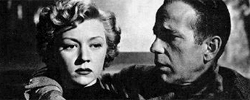
In A Lonely Place
1950 -
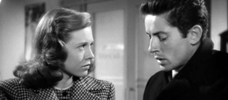
They Live By Night
1948 -
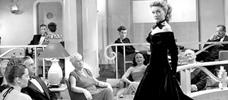
A Woman’s Secret
1949 -
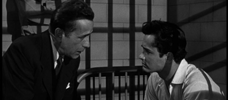
Knock on Any Door
1949 -

Born to Be Bad
1950 -
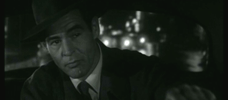
On Dangerous Ground
1952 -
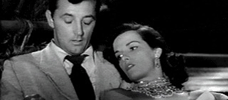
Macao
1952 -
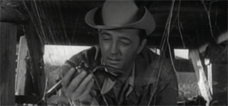
The Lusty Men
1952 -

Johnny Guitar
1954 -

High Green Wall
1954 -
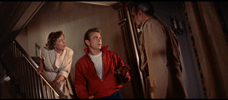
Rebel Without a Cause
1955 -
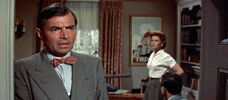
Bigger Than Life
1956 -
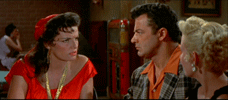
Hot Blood
1956 -

The True Story of Jesse James
1957 -
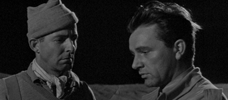
Bitter Victory
1957 -

Party Girl
1958 -

King of Kings
1961 -
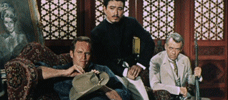
55 Days at Peking
1963 -

The Janitor
1974 -
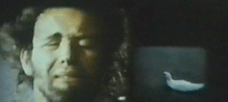
We Can’t Go Home Again
1973-1976 -
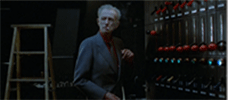
Lightning Over Water
1980
We don’t do comments anymore, but you may contact us here or find us on Twitter or Facebook.



